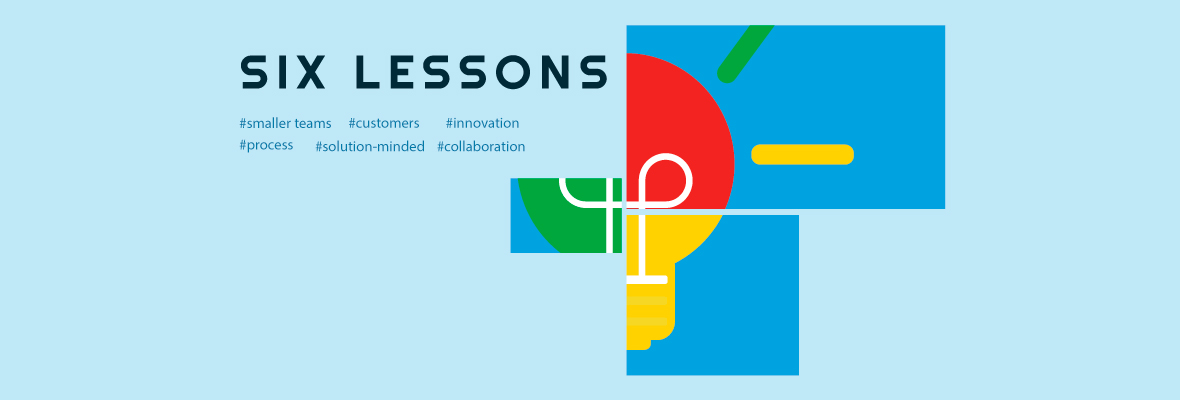The following first appeared on Forbes
There is no shortage of content and guidance freely available on the web on how to think like a startup, act more like a startup, turn your various business units into innovation factories like startups and become more agile and responsive to customer demands just like startups.
Startups move faster, collaborate better and aren't trapped by corporate bureaucracy or hidebound ways of thinking. But if you want your company or business units to act more like startups in their software development process, it helps to understand how startups really work and at what stages of their development. As you adopt the things that work for startups, you'll need to be cognizant that your business units will need to grow and mature just like successful startups do.
Here are six ideas to innovate like a startup while avoiding common startup pitfalls:
- Form smaller teams with leaders that carry a deep product understanding and are steeped in innovation ideas.
Amazon famously popularized the "two-pizza rule" in its early days. If you couldn't feed the people in your meeting with two pizzas, you had too many people in the project for it to be productive.
The same holds true when forming product and development teams. Six to eight people on a team is plenty; five is even better for faster decision-making and higher productivity. Just make sure you have the right leaders in place for these teams. Team leaders at this stage or size have to be hands-on player-coaches who are innovative thinkers, passionate about understanding the solution and eager to interact with end users to collect feedback. - Listen to your customers.
You can't have a successful software development initiative without understanding customers' pain points and how other tools in the market are failing to meet those needs.
Don't be afraid to allow your customers to participate in the innovation process as opposed to developing solutions in search of problems. This will also help you to take your products to where the market opportunity is and avoid the single-product mindset, instead developing complementary product lines on the same codebase. - Measure success based on innovation, not on people or budgets.
Since you'll be keeping your teams small and lean like any startup worth its salt, staff and budget numbers shouldn't be the defining barrier. Innovation is the only metric that counts. Are you expanding your product's capabilities? Are you introducing new technology into the market before the competition? Are you reusing software assets to develop new product lines and move beyond the single-product mindset?
Creating the right culture and right talent to lead at this stage is critical for companies to continue to innovate, drive results and more importantly, establish a strong "product culture." Following this course provides a foundation for a single-product company to be able to expand to a multi-product company and continue to maintain its startup culture as well as a fast pace of innovation. - Put a process in place that allows for continuous innovation and continuous deployment (CI/CD).
Modern agile software development requires constant updates as new features are added, tested and put into production. This process requires building a CI/CD pipeline. You establish the source code for a development project, build the software using your tool of choice, test the software to make sure it's behaving properly and free of coding errors and, finally, deploy the software once it's passed quality control. As you make daily changes and updates, you go through this routine continuously.
You can automate this process, using commercial or open source tools, and avoid errors that turn into bugs. Customers appreciate your innovation and ideas and expect you to be able to solve problems for them that other firms haven't figured out yet — but they still need your product to work. - Use solution-minded development techniques along with agile.
Agile development methods are great for supporting collaboration among remote teams, responding to changes faster, creating a feedback loop for continuous improvement and generally speeding up the product development lifecycle. This allows for a ton of features to be developed in short order.
As the company gets a chance to establish the early customer base for its product, processes tighten and become more disciplined. The startup now must manage the innovation cycle in SaaS in context with maintaining product quality and delivering the product to the customer efficiently.
When the innovation cycles are short and new features are added rapidly, it is critically important to tie the innovation cycle to a solution. This is where the traditional software development approach still has its place, especially in terms of setting out the solution context and persona of the end user. You can still use agile sprints, but with controls in place for solution validation so that the final software you develop looks more like what you set out to do and what your customers want. - Foster a spirit of collaboration between product management and product marketing.
Once you've developed a new product, you need to make sure that it resonates with buyers and shows them how it can solve their pain points. This is where product marketing comes in.
Getting your product management and product marketing teams on the same page will lead to better alignment of vision, strategy and tactics and make you more responsive to your customers' needs. Product marketing principles will provide a strong wrapper around the product development and make the end users appreciate the rapid development cycle to meet their feature demands.
Adopting some of the best traits of startups can help any development organization to raise their innovation game, become more responsive to customers and bring products to market faster. But startups have enough of a track record now to know what works and what doesn't. The above steps should give you a baseline to form innovation centers inside your organization, improve your customer relations and gain new relevancy in the market.
Next Steps:
- Read the blog: How IT Operations Can Dig Itself Out of Technical Debt
- Read the blog: IT Leadership in 2020.
- Follow OpsRamp on Twitter and LinkedIn for real-time updates and news from the world of IT operations.
Schedule a custom demo with an OpsRamp solution expert.






